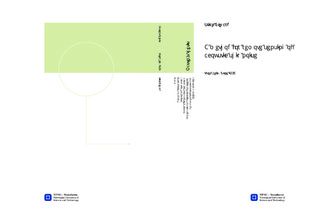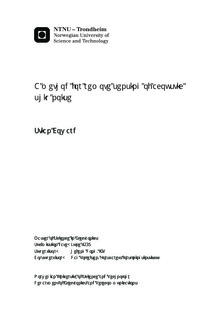| dc.contributor.advisor | Dong, Hefeng | nb_NO |
| dc.contributor.advisor | Tollefsen, Dag | |
| dc.contributor.author | Coward, Stian | nb_NO |
| dc.date.accessioned | 2014-12-19T13:49:38Z | |
| dc.date.accessioned | 2015-12-22T11:50:14Z | |
| dc.date.available | 2014-12-19T13:49:38Z | |
| dc.date.available | 2015-12-22T11:50:14Z | |
| dc.date.created | 2014-06-25 | nb_NO |
| dc.date.issued | 2013 | nb_NO |
| dc.identifier | 729416 | nb_NO |
| dc.identifier | ntnudaim:9882 | |
| dc.identifier.uri | http://hdl.handle.net/11250/2370989 | |
| dc.description.abstract | Ship noise in the ocean due to commercial shipping has gained increased interest in recent years because of its potential impact on marine life and the ocean environment. Hence, rapid methods to estimate the source level of commercial ships has obtained considerable research interest. Although a number of measurement standards exist that describe measurement procedures for dedicated measurement ranges or well-controlled measurement conditions, there is an interest in methods adapted/developed for non-ideal measurement conditions, such as those of a relatively narrow fjord with considerable shipping activity. This thesis addresses such a non-ideal setting in the context of ship noise measurements with a hydrophone near the seabed in shallow water with ships in passing at long ranges (many times the water depth).A method for ship-noise source level estimation is formulated that corrects measured (received) levels for background noise, uses a range estimate based on ship Automatic Identification System (AIS) data, and corrects for propagation effects using a complex acoustic propagation model (RAM) with a distributed source model. In addition, the LYBIN propagation model and a simple spherical spreading loss correction is applied alternatively. The goal is monopole ship source levels in 1 Hz bands and 1/3 octave frequency bands. A detailed description of the environment is used in RAM and LYBIN. The results in this thesis indicate that RAM is the best choice for a propagation model, as it handles multipath and dipole effects which become significant at low frequencies and long ranges. The method is applied to measurement data acquired in the Oslofjord, with source level estimates for seven commercial ships obtained and discussed. | nb_NO |
| dc.language | eng | nb_NO |
| dc.publisher | Institutt for elektronikk og telekommunikasjon | nb_NO |
| dc.title | A method for remote sensing of acoustic ship noise | nb_NO |
| dc.type | Master thesis | nb_NO |
| dc.source.pagenumber | 94 | nb_NO |
| dc.contributor.department | Norges teknisk-naturvitenskapelige universitet, Fakultet for informasjonsteknologi, matematikk og elektroteknikk, Institutt for elektronikk og telekommunikasjon | nb_NO |

